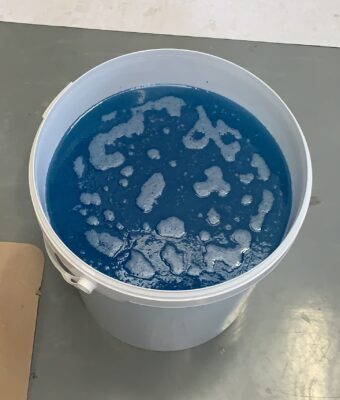Click on the icons below to access the various manuals. Here you will learn everything about the different types of epoxy resins that GietEpoxy sells.
You will also find all the manuals here to get started with your idea. Manuals for making an epoxy table to creating a resin art painting using pigments. Feast your eyes on our inspiration page and don’t be afraid to just do it!
Do you have a question about the manuals or anything else?
Then quickly send a message via the button at the bottom right of your screen. This way we can assist you quickly and professionally. There is also a contact page where you can contact us by phone and/or send an email. You can ask anything!
Are Manuals Useful?
Reading manuals is essential for improving your skills in working with epoxy resin. Whether you’re a beginner just starting to work with epoxy or an experienced craftsman refining your craft, carefully reading and understanding manuals offers numerous benefits that help you achieve better results and a smoother work experience.
Accuracy in Mixing Ratios: One of the most important aspects of working with epoxy resin is correctly mixing the resin and hardener. Manuals contain detailed instructions on the proper mixing ratios for various applications. By following these ratios accurately, you ensure optimal curing and prevent issues such as incomplete curing or weak adhesion.
Safety Guidelines: Epoxy resin is a powerful material that must be handled carefully to prevent injury and damage. Manuals contain important safety guidelines, such as the use of personal protective equipment (PPE), ventilation requirements, and recommendations for handling chemical substances. By following these guidelines, you minimize the risk of accidents and ensure a safe working environment.
Application Methods: Each application of epoxy resin requires specific techniques and methods to achieve the desired results. Manuals provide detailed instructions on various application methods, such as pouring, spreading, dipping, and brushing. By understanding and practicing these methods, you can improve your skills and work more efficiently.
Curing Time and Environmental Factors: The curing time of epoxy resin can vary depending on various factors, including ambient temperature and humidity. Manuals contain information on the optimal conditions for curing and provide guidelines for adjusting curing time to different environmental factors. By using this information, you can accurately manage curing time and prevent issues such as slow curing or overheating.
Troubleshooting and Solutions: Although epoxy resin is generally a versatile and durable material, problems can sometimes occur during the processing. Manuals often include sections with common problems and possible solutions. By familiarizing yourself with these troubleshooting guides, you can quickly identify problems and apply effective solutions, minimizing costly mistakes.
In short, reading manuals for working with epoxy resin is a crucial step in improving your skills and achieving success in your projects. By carefully following the guidelines and recommendations in manuals, you can work more efficiently, reduce errors, and achieve high-quality results.












